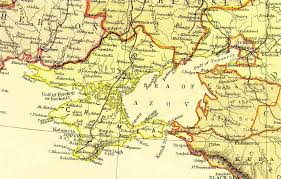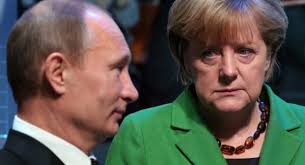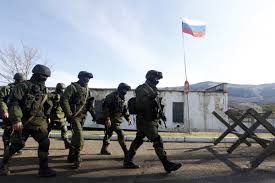In two weeks Ukraine has gone through two major shocks. The Ukrainian revolution was one of the most violent transitions to date, and not just in the post-Soviet space. And the Russian military intervention in Crimea arguably constituted the biggest European security crisis since the Balkans wars of the 1990s.
The events in Ukraine will long be contested by competing narratives and propaganda both inside and outside Ukraine. What matters now is managing the political fallout from the crisis and learning the right lessons to prevent any future recurrence of similar events. A useful way to consider future policy responses is to organise them around possible scenarios. For Ukraine, there may be at least three: a return to the status quo ante, a ‘Transnistrisation’ of Crimea, and a future of more military interventions.
Status quo ante?
The status quo ante would mean the return of Crimea within the legal realm of the Ukrainian state. It would mean that local authorities in Crimea are subordinated to Kiev and that local police, border guards and tax authority operate within Ukraine’s legal framework. Such a scenario appears very unlikely now.
Once Russia moved in militarily and dismantled the normal functioning of the Ukrainian state institutions – from the army to police and border guards – there is not much that could reverse this fait accompli. If one compares the developments in Crimea with the events in Transnistria, Abkhazia and South Ossetia in the late 1980s/early 1990s, one notices that whereas it took 2-3 years for the secessionist entities to gradually and painfully secede – de facto – from Georgia and Moldova, it took 3 days for the same to happen in Crimea. The reason is that, in the early 1990s, the process was mostly bottom-up: Russia offered some support but was mostly confused and consumed by its own crisis.
In Crimea, the opposite is true. First Russia moved in troops, then local actors mobilised to dismantle the Ukrainian state institutions in the region through a swift and targeted military action that took hours, not years.
A Ukrainian ‘Transnistria’?
The second scenario, much more likely in the medium term, is a ‘Transnistrisation’ of Crimea. Just like Crimea is planning now, Transnistria already held a referendum in 2006 in which 98% of voters opted for joining Russia. Full annexation did not happen, though the region is under de facto Russian control.
Again like the secessionist region of Moldova, this implies a de facto loss of control and long and fruitless negotiations over status, coupled with a steady hollowing out of state structures and consolidation of de facto Russian control of the region in political, economic and military terms. This would also mean that no state structures in Crimea would recognise Kiev as a legitimate and higher authority, and that Russia would build a bridge over the Kerch strait to gain direct access to Crimea.
In addition, Russia would at some point accept OSCE or UN mediation, and would push the process into a long and drawn out talks between Crimea and Kiev on power sharing. Throughout these negotiations, Russia would say that it supports the territorial integrity of Ukraine but that it is up to Kiev and Simferopol to sort out their differences. In the case of Transnistria, such a process has lasted 22 years and has not brought the parties any closer to a solution.
This scenario would be quite comfortable for Russia. It would not cost it much: Russia can certainly afford, and is even willing, to subsidise Crimea. If faced with external diplomatic pressures, it can always shift the blame for lack of progress on the Crimeans. Moscow would also reckon that, if Kiev moves towards NATO and potentially the EU, it can always recognise or even annex Crimea. And Russia would keep any Ukrainian government in check and on the hook, waiting for Ukrainian governments to offer Russia various geopolitical concessions in exchange for progress on conflict settlement in Crimea.
This model has been tried and tested by Russia in Transnistria, and it has worked well. It costs little and, potentially, brings wider geopolitical benefits. Yet it may not be the worst-case scenario – neither the most likely one.
A future of interventions?
If Moscow does not incur some serious costs for its Crimean adventure, there is nothing that could prevent it from doing so again in the future. Just a month ago very few thought that Russia could invade a neighbouring country unprovoked. Now such military interventions are on the table. And if this will be costless, there will be little to deter Moscow from such adventures in Ukraine or other post-Soviet countries.
Of course, the 2008 Russian-Georgian war was a serious warning that military invasions are not impossible. But the interpretation of that crisis was that Russia and Georgia both played a role in the escalation of the conflict: as a result, there was a certain degree of shared responsibility for the militarisation of the conflict zones. There was nothing of that sort in Crimea. The Ukrainians did not shoot or provoke. There was not a single Russian killed in Crimea: the only Russian who died in a political context in Ukraine in recent weeks – as Kadri Liik noted – was killed by sniper fire during the Maidan Square protests.
Unless there are some tangible and lasting costs for Russia – beyond a few months of relative diplomatic isolation – Putin would emerge with a major series of pluses from the current adventure. The seizure of Crimea has boosted his domestic standing, even among groups that tended to be in opposition to him, like some communists or ultra-nationalists. Putin’s view of his role in history is to reverse as much as possible of the disintegration of the USSR – and Crimea is a powerful step in that direction.
Finally, keeping de facto control of Crimea is another plus. It is valuable in itself, but also as a constraint on the foreign policy options of any future Ukrainian government.
A few cancelled summits, followed by a presumed normalisation in a year or so, will not affect Moscow seriously. The behaviour of Russian stock markets was indicative: on the first Monday after the intervention the Russian stock market suffered a serious drop but it mostly recovered within a couple of days. Russia is certain that its diplomatic standing will recover quickly too. And then the question for Putin will be: why not try again?
Adventures like the one in Crimea are a bit risky, but not excessively so – and they may pay off handsomely. Opportunities and possible pretexts for such future adventures in the post-Soviet space abound. If Crimea works out in the end, what prevents a similar military take over of other parts of Eastern Ukraine or even Odessa, Ukraine’s biggest port situated within roughly half an hour from Transnistria itself, where 1300 Russian soldiers are stationed? Or imagine a succession crisis in a post-Nazarbayev Kazakhstan, where potential contenders bring people to the streets and Russia moves in to ‘protect’ its compatriots. Or a deterioration of the economic situation in Azerbaijan due to decreased oil production, leading to street protests and a possible stand-off between the existing rulers and the protesters that degenerates into violence, followed by a Russian move to ensure that North Azerbaijan is not affected by ‘instability’ in the rest of the country. Any of these scenarios is as imaginable as what happened in Crimea.
To minimise the chances for such scenarios to materialise, Russia’s calculation has to be affected with action that goes beyond diplomatic signals and costs Russia economically.
See the original post © euobserver











